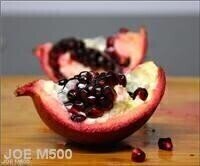-
 GC-MS helps to highlight fraudulent pomegranate juice
GC-MS helps to highlight fraudulent pomegranate juice
GC, MDGC
GC-MS put to work on pomegranate juice
Nov 30 2010
According to professor of chemistry Dr Cynthia Larive, GC-MS, liquid chromatography-mass spectrometry and nuclear magnetic resonance spectroscopy can be used in conjunction to check the content of juices, wine and oils.
"We're looking at whether or not our molecular fingerprint method can be used to identify products claiming to contain pomegranate juice when they don't," she says.
Among the trace elements they are looking for are antioxidants unique to pomegranates and which are among the health benefits for which the juice is purchased by many consumers.
Pigments, sugars, organic acids and amino acids also help to contribute towards the list of compounds that can identify pomegranate juice - or highlight its absence.
Dr Larive heads a team of graduate students which takes a problem-solving route towards identifying issues and resolving questions through a variety of analytical chemistry techniques.
Digital Edition
Chromatography Today - Buyers' Guide 2022
October 2023
In This Edition Modern & Practical Applications - Accelerating ADC Development with Mass Spectrometry - Implementing High-Resolution Ion Mobility into Peptide Mapping Workflows Chromatogr...
View all digital editions
Events
May 05 2024 Seville, Spain
May 15 2024 Birmingham, UK
May 19 2024 Brno, Czech Republic
May 21 2024 Lagos, Nigeria
May 23 2024 Beijing, China













